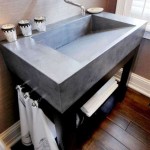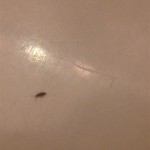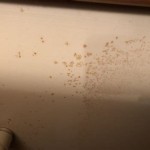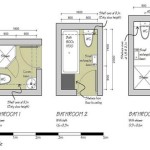Why Am I Getting Small Ants in My Bathroom?
The persistent presence of small ants in a bathroom is a common household pest concern. Their appearance is rarely coincidental and typically indicates underlying factors that attract these insects to this particular area of the home. Understanding the reasons behind this infestation is critical for effective identification, treatment, and prevention.
While ants forage widely for food and water, their consistent presence in a bathroom suggests that the environment offers a compelling reason for them to return. Unlike other areas of the house, the bathroom's inherent humidity, potential water leaks, and even residue from toiletries can create an attractive habitat. Additionally, their diminutive size allows them to exploit even the smallest cracks and crevices in search of resources, making complete elimination a challenging task without understanding the root cause of their presence.
Moisture and Water Sources
One of the primary attractants for small ants in a bathroom is moisture. Ants, like all living organisms, require water for survival, and bathrooms often provide readily available sources. Leaky faucets, dripping showerheads, and condensation around pipes offer ideal hydration points. Even seemingly minor leaks can provide sufficient water for an ant colony to thrive.
Beyond the obvious sources of water, humidity itself can be an attractant. Poorly ventilated bathrooms can maintain elevated humidity levels, creating a favorable environment for ants that prefer damp conditions. This is particularly true for species such as pharaoh ants and moisture ants, which are frequently found in bathrooms and kitchens. They prosper much more in humid and damp condition.
Furthermore, the presence of standing water around drains, in shower stalls, or under sinks creates breeding grounds for bacteria and mold, which can serve as a food source for certain ant species. The organic material that accumulates in these areas attracts ants, which then exploit the available water sources to sustain their colonies.
Addressing these moisture issues is a crucial first step in eliminating an ant infestation. Repairing leaks, improving ventilation, and ensuring proper drainage are essential measures to make the bathroom less attractive to ants. This involves not only fixing visible leaks but also investigating potential hidden leaks within walls or under flooring, which can be more difficult to detect but equally significant in sustaining ant populations.
Food Sources in the Bathroom
While bathrooms are not typically associated with traditional food sources, they can contain organic matter that attracts ants. Hair, skin cells, and soap residue accumulate in drains, on floors, and around sinks, providing a potential food source for certain ant species. These materials, although seemingly insignificant, can sustain small ant colonies, especially when combined with available moisture.
Spilled toiletries, such as sugary lotions, shampoos, and conditioners, can also attract ants. Even the smallest amount of these substances, if left uncleaned, can serve as a potent attractant. Ants have a keen sense of smell and can detect these food sources from a considerable distance, leading them to explore and eventually colonize the bathroom.
Moreover, the waste bin in the bathroom can be a source of food, especially if it contains used tissues, cotton swabs, or other items with traces of organic matter. Even seemingly clean materials can harbor microscopic organisms that ants will feed on. Regularly emptying the waste bin and using a liner can help to minimize this attraction.
Eliminating these food sources requires meticulous cleaning practices. Regularly wiping down surfaces, cleaning drains, and promptly cleaning up any spills are crucial steps. Using appropriate cleaning products that remove organic residue can further reduce the attractiveness of the bathroom to ants. Furthermore, storing toiletries in sealed containers can prevent spills and minimize their accessibility to ants.
Access Points and Entry Routes
Ants are adept at finding even the smallest access points to enter a building. Cracks in walls, gaps around pipes, and openings around windows and doors provide pathways for ants to infiltrate the bathroom. These entry points can be seemingly insignificant, but they offer a direct route for ants to access the resources they need.
The plumbing lines that run through the bathroom often create opportunities for ants to enter. The openings around pipes where they pass through walls or floors are common entry points. These areas are often damp and provide easy access to water sources within the bathroom.
Additionally, ants can enter through shared walls with adjacent rooms, especially if those rooms have existing ant infestations. Ants can travel within wall cavities and emerge in the bathroom in search of food and water. This is particularly common in apartment buildings or multi-family dwellings where interconnected spaces allow ants to move freely between units.
Sealing these access points is a critical component of ant control. Using caulk or sealant to fill cracks and gaps around pipes, windows, and doors can prevent ants from entering the bathroom. Inspecting and sealing any openings in the walls or floors can further limit their access. Ensuring that door and window frames are properly sealed prevents ants from squeezing through even tiny spaces.
Addressing these access points requires a thorough inspection of the bathroom and surrounding areas. Looking for small cracks and gaps, especially near water sources and plumbing fixtures, is essential. Using a flashlight can help to identify hidden entry points in dark or hard-to-reach areas. Once identified, these entry points can be effectively sealed to create a barrier against ant intrusion.
Effective ant control requires a multi-faceted approach that addresses the underlying causes of the infestation. Correct identification of ant species is also important to determine the most effective treatment methods. While some general solutions may provide relief, knowing what specific behaviors the species showcase is important.
It is important to note that treating an existing infestation without addressing the environmental factors that attract ants is unlikely to provide a long-term solution. Ants will continue to return as long as food, water, and access points remain available. Therefore, addressing the moisture issues, eliminating food sources, and sealing entry points are essential for preventing future infestations.
Furthermore, it is important to consider the use of appropriate pest control measures. While over-the-counter sprays can provide temporary relief, they often only kill the ants that are visible and do not address the underlying nest. Baiting systems, on the other hand, can be more effective in targeting the entire colony. Ants carry the bait back to the nest, where it is shared with other ants, including the queen, ultimately leading to the colony's demise.
For severe or persistent infestations, it may be necessary to consult with a professional pest control service. Professional exterminators have the expertise and resources to identify the ant species, locate the nest, and implement effective treatment strategies. They can also provide recommendations for preventing future infestations.
Regular maintenance and sanitation are crucial for preventing future ant infestations in the bathroom. Wiping down surfaces after use, cleaning drains regularly, and promptly addressing any water leaks can help to minimize the attractiveness of the bathroom to ants. Additionally, ensuring proper ventilation can prevent humidity buildup, reducing the risk of moisture-related problems.
By addressing the underlying causes of ant infestations, homeowners can effectively eliminate these pests from their bathrooms and prevent their return. A combination of moisture control, food source elimination, access point sealing, and appropriate pest control measures can create a less hospitable environment for ants, ensuring a cleaner and more hygienic bathroom.
In summary, understanding the factors that attract ants to bathrooms, implementing preventative measures, and addressing existing infestations promptly and effectively can help to maintain a pest-free home. Regular maintenance and sanitation, combined with targeted pest control strategies, are crucial for long-term ant management.

How To Stop Ants From Invading Your Bathroom Identification And Prevention Tips Tabor Pest Control

Boise Idaho Pest Control Pestcom

Niagara Pest Control Why Are There Carpenter Ants In The Bathroom

Why Tiny Ants Have Invaded Your House And What To Do About It

Blog What Are Those Teeny Weenie Ants Delta Optimist

Why Do I Have Ants In My Bathroom

How To Get Rid Of Sugar Ants John Moore Services

How To Get Rid Of Tiny Ants In Your Bathroom

Why Do I Have Hundreds Of Tiny Ants All Over My Kitchen

Where Do Sugar Ants Come From How To Keep Them Away Abc Blog
Related Posts







